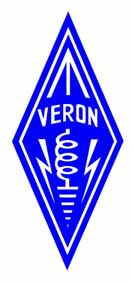
 | VERON afd. 56 Waterland Elektronische Nieuwsbrief. Januari 2015 Redactie: PA4XA pa4xa@amsat.org |
|---|
| Naam | Call | Telefoon | Email adres | |
|---|---|---|---|---|
| Voorzitter | Frans Lindeman | PA1FR | 649169 | pa1fr@amsat.org |
| Secretaris | Bert van der Meer | PA5BM | 647532 | pa5bm@amsat.org clubzaken: pi4wld@veron.nl |
| Penningmeester | Pim Eijlander | PA5PEX | 364031 | pa5pex@veron.nl |
| Bestuurslid Webmaster | Gert Meinen | PA3AAV | Via email! | pa3aav@veron.nl |
| Bestuurslid | Jan Beijer | PE2ELS | 0204930194 | jbeijer2@xs4all.nl |
| QSL manager | Erwin Kleis | PA3BLS | 438934 | pa3bls@amsat.org |
| Leesmap | Nico van der Bijl | PA0MIR | 434954 | pa0mir@veron.nl |
| Waterland Award | Martin Ouwehand | PF9A | 366101 | pf9a@veron.nl |
| Redactie nieuwsbrief | Sietse | PA4XA | Via email! | pa4xa@amsat.org |
| Waterland ronde | Iedere vrijdagavond om 21.00 uur lokale tijd op 145.350 MHz | |||
| Homepage | http://www.veronwaterland.nl/ | |||
INHOUD
• Bijlage: Amstelstraler december 2014
Het wordt voor de afdeling weer een spannend jaar, 2015. Enkele bestuursleden, incl. de voorzitter en de secretaris, hebben duidelijk te kennen gegeven om er in februari mee te stoppen. Nu hebben we enkele jaren geleden ook op dit punt gestaan en heeft het haartje gescheeld of we hadden 'en group' naar Zaanstad moeten rijden voor onze bijeenkomsten. Ik geloof niet dat dat iets waar ik, maar ik denk met mij velen, naar uit had gekeken of op dit moment kijk. Dus er moet iets gebeuren om onze afdeling te behouden. De oud gedienden hebben keer op keer hun verantwoordelijkheid genomen, maar die oud gedienden beginnen nu echt 'oud' gedienden te worden en ze hebben er recht op om nog vele jaren gewoon maandelijks in Purmerend naar de verenigingsavond te komen. Actie van de iets minder oud gedienden, ja ja ook bij ons slaat de vergrijzing toe, is nu dus zeer gewenst. Ik reken er op dat er in februari weer een voltallig bestuur kan worden geïnstalleerd en ik draag zelf bij door de nieuwsbrief weer een jaar te maken en ook het regelen (dit betekent een voorzet naar de secretaris of ander verantwoordelijk bestuurslid) van de lezingen zal ik dit jaar op mij nemen. Dus beste leden bij deze vast een zeer voorspoedig, gezond en amateurradiorijk 2015 gewenst (a.s. maandag komt de bijbehorende hand) maar zeker ook een wijs 2015 want het voortbestaan van onze afdeling ligt in uw handen.
Op maandag 5 januari 2015 staat onze wereldberoemde (nou?) nieuwjaarsbijeenkomst weer te gebeuren. Kosten noch moeite zijn gespaard, de haring is nog net niet zelf gevangen door Martin, om de hapjes en drankjes weer van top kwaliteit te laten zijn. Zoals gewoonlijk zijn ook de partners bij deze zeer uitgenodigd, want 9 x op maandagavond alleen thuis kan maar 10x is te gek. De bijeenkomst is zoals gewoonlijk in het clubgebouw van de hengelsport vereniging in Purmerend, aan de Vrouwenzandstraat 157 in Purmerend. De avond begint om 20.00 uur en er is man/vrouw kracht om ons van die lekkernijen te voorzien. Ook Erwin, de QSL manager, is weer op zijn post. Geen enkele reden om niet te komen dus.
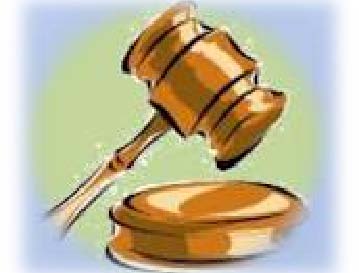
No og twee weken en het nieuwe jaar doet zijn n intrede. Ondanks
he et feit dat dit een stukje is voor de nieuwsbbrief van januari,
bli ijven we nog even in het oude jaar. De afde elingsbijeenkomst
be egin december bracht ons een lezing van W Wim
Te elkamp/PA3DJS over NVIS (Near Vertical Incidence
Sk kywave) propagatie. Wim begon met ons nog g eens duidelijk
de e grondprincipes van propagatie en met nam me die op de HF
fre equenties te vertellen en het hoe en waaroom de lagere hf frequenties in ongunstige om mstandigheden toch via NVIS gebruikt kondden worden. Voor velen van ons toch een eyeoopener en een opfrisser van onze antenne k kennis! Wim kreeg het verdiende ap pplaus en de kaas voor zijn interessante lez zing.
Het bestuur is al druk bezig met de benodigde stukken voor de ALV in februari samen te stellen en ook dan zal er e een nieuwe voorzitter en secretaris moetenn komen anders heeft de afdeling geen dage elijks bestuur meer en dus een groot probleeem.
Voor alle duidelijkheid; de ni ieuwjaarsreceptie voor onze afdeling vindt plaats op maanndag 5 januari vanaf 20.00 uur in het clubgebouw van d de visvereniging Purmerend. Het zal ongetwijfeld weer ge ezellig worden met de nodige drankjes en hapjes .
Rest mij u allen namens het v voltallige afdelingsbestuur fijne feestdagen toe te wenssen alsmede een voorspoedig begin van het nieuwe jaar. O Op de receptie hoop ik met een handdruk deze wens te bekr rachtigen.
Frans/PA1FR
A new (old) ham explains how w he is using computer technology to enjoy y Morse code QSOs even though he hasn’t t fully relearned the code.
If you are old enough to rem member the Novice ticket, which required MMorse code (CW) proficiency at five words perr minute (WPM), you probably also rememb ber the fear of your first CW exam. I was soo nervous I could barely read my handwrittten copy from my penhand shaking so muchh. And even though the exam administratorr was only sending five words per minute, to me e it seemed like 500 words per minute. Let t’s see, was that dah ditdit or dah ditditdit? HHeck, it was all starting to sound the same e. Somehow, I passed that exam, but swore e to myself that I would never take anothe er one.
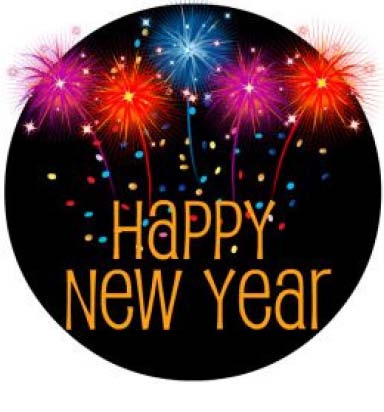
Like many hams, I got interested in amateur radio in my teens. Even so, I didn’t get my Novice ticket until my early 20s, which was about the same time I got married and started a family. Anyway, as you might guess, the hobby of radios, amplifiers, and antennas was replaced by the reality of babysitters, diapers, and mortgages. Fastforward a few decades, and while I still have to deal with mortgages, at least the babysitters and diapers are no longer on the agenda. So, I finally got thinking about amateur radio again … and that loathed CW exam. You can imagine my surprise when a buddy told me there was no more CW requirement for any of the amateur tickets. Now that was a gamechanger.
I studied up for the Tech ticket, and passed handily. Now I was ready to get on the air. But over time I started to realize that Tech privileges are pretty limited, especially if you want to work DX or even contact other parts of the U.S. — at least on phone. Then it hit me: In addition to voice privileges on part of 10 meters and the VHF/UHF bands, the Tech license offers CW privileges on 80, 40, 15, and 10 meters. If I could figure out a way to use some of the current CW software technology on 40 meters, I could do some DX on a basic and relatively inexpensive station setup.
* 586 Willoughby Ln Bowling Green, KY 421019055 Email: <mrevels@earthlink.net>
To get started, I hooked up my Alinco DXSR8, a RIGblaster Advantage external audio card, and a Buddipole portable antenna. I had an old Windows laptop on hand, and conscripted it as my CW test machine. These were connected as illustrated in Figure 1:
Compared to 20 years ago, today there are many more possibilities for automating CW. I started downloading various free (or demo) packages just to see how they worked. I tried several, including:
The bad fist problem is probably the most difficult aspect for the software to manage. Simply put, bad fist means CW characters are not formed properly or have incorrect spacing. Not surprisingly, I found that all the tested software had trouble in this area.
The More, the Merrier
My most profound discovery, which occurred by accident, was that you can run more than one decoder tool at the same time. This means that if you have one tool that does certain functions well, but others poorly, you can add a different tool as needed. For example, there were numerous positive comments on the web about FLDigi. This is mainly because it will work with several digital modes in addition to CW. However, in my experience, I found that FLDigi’s CW decoding capability was not quite as good as MRP40 (despite the eHam rating). But since I can run Fldigi and MRP40 at the same time, I get the best of both worlds. See Figure 2 for a screenshot example. Note how MRP40’s decoded text (on the right) is more complete.
CW Keyers
Aside from CW decoding, some CW software tools also provide transmit (keyer) capabilities. I found that most tools do this in a similar way. I also found that, unlike receiving, there does not seem to be much debate on how well a given keyer software tool sends CW. However, CW keyer tools do vary on how they implement macros.
Macros refer to the use of a single computer keyboard key to send many different key strokes. For example, with Fldigi I can program the F5 key to send the following CQ automatically:
You should note that if you find a decoder/keyer tool you like, but it does not have macro capability, that’s not a problem. You can use basic computer macro programs such as Macro Express (see <http://www.macros.com/>) to automate any keystrokes you like. In fact, Macro Express has far more macro capability than any of the decoder tools I reviewed. It is very powerful, but, unfortunately, it is not free.
CW Protocol
I alluded earlier to the importance of protocol. If you are new to CW, it can be challenging when conducting a QSO to know what to say and when to say it. For example:
My Results
My initial results using Fldigi and MRP40 were very satisfying. I completed my first automated CW QSO with a local ham not more than five miles away at 10 watts. This increased my confidence, which encouraged me to increase my power to 100 watts. Over the next few days, I was able to make several more automated CW QSOs within a 500to 600mile radius, and without knowing a lick of Morse code. Well, that is a bit of an exaggeration; I know CQ when I hear it!
Keep in mind that I was using a Buddipole in a dipole configuration about 8 feet off the ground. Using a dipole that low to the ground undoubtedly resulted in a high takeoff angle, which limited my long range DX opportunities. As a result, I am looking forward to working on a different antenna configuration to see how well I can make more DX contacts using the automated CW tools.
List of Software
As I mentioned earlier, there are numerous CW decode/keyer tools available. I listed all the tools I know about with their websites, eHam ratings, and listed price in Table 1. Not all of these programs are either exclusively or primarily intended as CW decoding/keying software. CW Skimmer, for example1, seems better suited for DX contesting; it really shines in helping spot CW callsigns in pileups.
I also have to share a web tool that was very beneficial for testing my setup. The Reverse Beacon Network (RBN) is comprised of listening stations that use software, like CW Skimmer, to listen for CW CQs on various bands. When they detect a valid license ID, they broadcast it on their website <http://www.reversebeacon. net/index.php>. As a result, you can transmit CQ with your radio and watch RBN (in near real time) on your computer to see where you are being heard. This makes it very easy to determine your signal reach and whether changes in antenna configuration make a difference.
Conclusion
Based on my experience, you can easily make HF CW contacts on 40 meters using simple equipment, free CW software, and absolutely zero knowledge of Morse code. I know that some hams have a negative attitude towards using software for CW2. I find that frequently the most vocal are those that have used CW for many decades and can send and copy 3040 WPM or faster. I get that. However, very few new operators today will ever reach that level of proficiency.
From my perspective, there are three good reasons to consider using software for CW:
So, whether you are a new Tech, or a seasoned ham who just wants to get into CW (again), give CW software a try. If you are a new Tech, hopefully you will have enough fun to stay in the hobby until you can score that General ticket.
Notes:
1 You might want to check out Eric Manning’s excellent review of CW Skimmer in the November 2013 edition of QST.
2 – Editor’s comment: While we have no objection to the use of CW decoding software as part of your ham radio “toolkit,” we firmly believe that learning and knowing Morse code, at least at a basic level, is a very useful skill. One of the great benefits to Morse is that it is the only “digital” code that can be decoded without using a computer, allowing for the use of very simple stations, particularly in “off the grid” situations. CW decoding software can be an excellent tool to help you learn the code, as you will likely begin picking up letters and words without even realizing it. But it is our strong belief that, when possible, it should be used as an adjunct to learning Morse code, not as a substitute. – W2VU
Wordt dit de toekomst?
Nico, PA0MIR
5. Eraf
Ik heb een nieuwe 30m deltaloop bouwkit te koop. Dit zijn alle benodigdheden voor een 30m deltaloop, exclusief de 29.7 meter antennedraad. Voor 25 euro ben je de man of vrouw natuurlijk. Interesse? Spreek me a.s. maandag maar aan.
PA4XA, Sietse
6. Vlooienmarkt NO Veluwe
Zaterdag 28 februari 2015 organiseert de afdeling Noord Oost Veluwe van de landelijke Vereniging voor Experimenteel Radio Onderzoek (VERON) al weer voor de twintigste maal haar Elektronica Vlooienmarkt. Deze wordt gehouden in de meer dan 1000 vierkante meter grote sporthal van MFC Aperloo alweer ruim 230 meter aan kramen opgesteld zal staan.
Op deze Elektronica Vlooienmarkt worden nieuwe of gebruikte spullen aangeboden door standhouders uit Nederland, Duitsland en België Er is een groot aanbod van spullen die op de een of andere manier met elektronica te maken hebben.
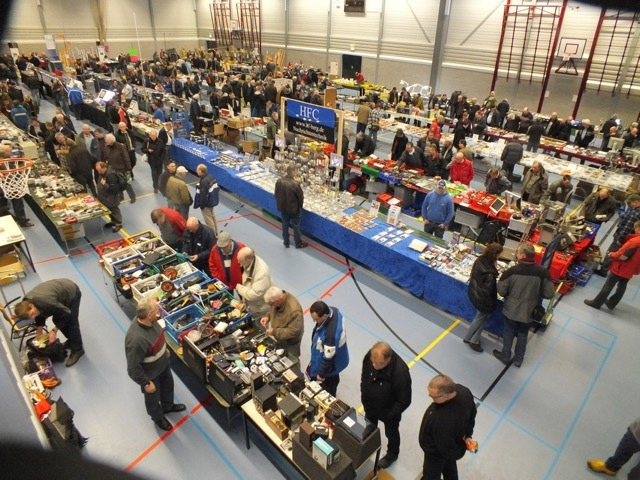
Voor de radio hobbyisten zijn er allerlei spullen te koop variërend van antennes, kabels, meetapparatuur en voedingen tot allerlei soorten transceivers, porto`s. En natuurlijk wordt de zelf bouwende elektronica hobbyist niet vergeten door het grote aanbod van losse onderdelen en (sloop)apparaten. Zo zijn er voor de computer liefhebbers computers, laptops, componenten en accessoires verkrijgbaar maar ook DVD`s en dergelijke voor zeer gunstige prijzen. Ook zullen er allerlei soorten led verlichting , led strips, zaklantaarns, telefoonladers, opbergsystemen, opbergkratten, gereedschap en vele andere zaken te koop aangeboden worden.
Dus mocht u op zoek zijn naar een moeilijk verkrijgbaar onderdeel, verzamelt u oude radio’s, oude leger apparatuur, bent u een computeraar, of wat dan ook op het gebied van elektronica, kom dan zaterdag 22 februari 2014 naar deze gezellige Radiomarkt. De markt wordt gehouden in het Multi Functioneel Centrum “M.F.C Aperloo" Stadsweg 27 't Harde. De markt begint om 09.00 uur en duurt tot 15.00 uur en de entree bedraagt 3 Euro. Er is voldoende gratis parkeerruimte .
Voor het laatste nieuws en informatie : www.pi4nov.nl
7. Slotwoord
Dit was de eerste nieuwsbrief van 2015. Ik heb ook een mooi stuk over 'Arduino', een hippe computer techniek voor experimenteerders, uit de laatste Amstelstraler geprobeerd te importeren maar dit is mislukt. Het artikel is echter dusdanig interessant dat ik het jullie niet wil onthouden. ik voeg daarom ook maar de hele Amstelstraler bij, want er staan nog meer leuke artikelen in. Ik hoop dat ze het me daar niet kwalijk nemen, maar hij staat op hun website dus zal het wel meevallen.
Ik hoop dat ik in 2015 weer leuke en interessante nieuwsbrieven kan maken. Ik roep het nog maar een keer : COPIJ! Ik begrijp dat jullie niet vrolijk worden van mijn voortdurende oproepen, maar ik blijf het gewoon doen. Ik heb in het recente verleden wel vaker uit onverwachte hoek leuke copij ontvangen. In dat kader hoop ik natuurlijk dat onze vaste en zeer gewaardeerde leveranciers, Stef en Klaas, ook in 2015 weer inspiratie weten te vinden.
Tot slot, kijk ik uit naar de nieuwjaarsbijeenkomst, altijd gezellig en traditioneel een goed begin van het nieuwe (radio) jaar.
Salute, tot maandag.
Best 73’s, Sietse (PA4XA)
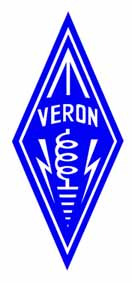 | VERON afd. 56 Waterland Elektronische Nieuwsbrief. Januari 2015 Redactie: PA4XA pa4xa@amsat.org |
|---|
| Naam | Call | Telefoon | Email adres | |
|---|---|---|---|---|
| Voorzitter | Frans Lindeman | PA1FR | 649169 | pa1fr@amsat.org |
| Secretaris | Bert van der Meer | PA5BM | 647532 | pa5bm@amsat.org clubzaken: pi4wld@veron.nl |
| Penningmeester | Pim Eijlander | PA5PEX | 364031 | pa5pex@veron.nl |
| Bestuurslid Webmaster | Gert Meinen | PA3AAV | Via email! | pa3aav@veron.nl |
| Bestuurslid | Jan Beijer | PE2ELS | 0204930194 | jbeijer2@xs4all.nl |
| QSL manager | Erwin Kleis | PA3BLS | 438934 | pa3bls@amsat.org |
| Leesmap | Nico van der Bijl | PA0MIR | 434954 | pa0mir@veron.nl |
| Waterland Award | Martin Ouwehand | PF9A | 366101 | pf9a@veron.nl |
| Redactie nieuwsbrief | Sietse | PA4XA | Via email! | pa4xa@amsat.org |
| Waterland ronde | Iedere vrijdagavond om 21.00 uur lokale tijd op 145.350 MHz | |||
| Homepage | http://www.veronwaterland.nl/ | |||
INHOUD
• Bijlage: Amstelstraler december 2014
1. Voorwoord
Het wordt voor de afdeling weer een spannend jaar, 2015. Enkele bestuursleden, incl. de voorzitter en de secretaris, hebben duidelijk te kennen gegeven om er in februari mee te stoppen. Nu hebben we enkele jaren geleden ook op dit punt gestaan en heeft het haartje gescheeld of we hadden 'en group' naar Zaanstad moeten rijden voor onze bijeenkomsten. Ik geloof niet dat dat iets waar ik, maar ik denk met mij velen, naar uit had gekeken of op dit moment kijk. Dus er moet iets gebeuren om onze afdeling te behouden. De oud gedienden hebben keer op keer hun verantwoordelijkheid genomen, maar die oud gedienden beginnen nu echt 'oud' gedienden te worden en ze hebben er recht op om nog vele jaren gewoon maandelijks in Purmerend naar de verenigingsavond te komen. Actie van de iets minder oud gedienden, ja ja ook bij ons slaat de vergrijzing toe, is nu dus zeer gewenst. Ik reken er op dat er in februari weer een voltallig bestuur kan worden geïnstalleerd en ik draag zelf bij door de nieuwsbrief weer een jaar te maken en ook het regelen (dit betekent een voorzet naar de secretaris of ander verantwoordelijk bestuurslid) van de lezingen zal ik dit jaar op mij nemen. Dus beste leden bij deze vast een zeer voorspoedig, gezond en amateurradiorijk 2015 gewenst (a.s. maandag komt de bijbehorende hand) maar zeker ook een wijs 2015 want het voortbestaan van onze afdeling ligt in uw handen.
2. Maandag 1 december
Op maandag 5 januari 2015 staat onze wereldberoemde (nou?) nieuwjaarsbijeenkomst weer te gebeuren. Kosten noch moeite zijn gespaard, de haring is nog net niet zelf gevangen door Martin, om de hapjes en drankjes weer van top kwaliteit te laten zijn. Zoals gewoonlijk zijn ook de partners bij deze zeer uitgenodigd, want 9 x op maandagavond alleen thuis kan maar 10x is te gek. De bijeenkomst is zoals gewoonlijk in het clubgebouw van de hengelsport vereniging in Purmerend, aan de Vrouwenzandstraat 157 in Purmerend. De avond begint om 20.00 uur en er is man/vrouw kracht om ons van die lekkernijen te voorzien. Ook Erwin, de QSL manager, is weer op zijn post. Geen enkele reden om niet te komen dus.
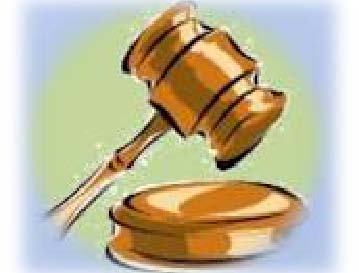
3. Van de voorzitter
No og twee weken en het nieuwe jaar doet zijn n intrede. Ondanks
he et feit dat dit een stukje is voor de nieuwsbbrief van januari,
bli ijven we nog even in het oude jaar. De afde elingsbijeenkomst
be egin december bracht ons een lezing van W Wim
Te elkamp/PA3DJS over NVIS (Near Vertical Incidence
Sk kywave) propagatie. Wim begon met ons nog g eens duidelijk
de e grondprincipes van propagatie en met nam me die op de HF
fre equenties te vertellen en het hoe en waaroom de lagere hf frequenties in ongunstige om mstandigheden toch via NVIS gebruikt kondden worden. Voor velen van ons toch een eyeoopener en een opfrisser van onze antenne k kennis! Wim kreeg het verdiende ap pplaus en de kaas voor zijn interessante lez zing.
Het bestuur is al druk bezig met de benodigde stukken voor de ALV in februari samen te stellen en ook dan zal er e een nieuwe voorzitter en secretaris moetenn komen anders heeft de afdeling geen dage elijks bestuur meer en dus een groot probleeem.
Voor alle duidelijkheid; de ni ieuwjaarsreceptie voor onze afdeling vindt plaats op maanndag 5 januari vanaf 20.00 uur in het clubgebouw van d de visvereniging Purmerend. Het zal ongetwijfeld weer ge ezellig worden met de nodige drankjes en hapjes .
Rest mij u allen namens het v voltallige afdelingsbestuur fijne feestdagen toe te wenssen alsmede een voorspoedig begin van het nieuwe jaar. O Op de receptie hoop ik met een handdruk deze wens te bekr rachtigen.
Frans/PA1FR
4. Effectively Using CW Sooftware Tools
A new (old) ham explains how w he is using computer technology to enjoy y Morse code QSOs even though he hasn’t t fully relearned the code.
BY MARK REVELS*, KJ4WPWPQ
If you are old enough to rem member the Novice ticket, which required MMorse code (CW) proficiency at five words perr minute (WPM), you probably also rememb ber the fear of your first CW exam. I was soo nervous I could barely read my handwrittten copy from my penhand shaking so muchh. And even though the exam administratorr was only sending five words per minute, to me e it seemed like 500 words per minute. Let t’s see, was that dah ditdit or dah ditditdit? HHeck, it was all starting to sound the same e. Somehow, I passed that exam, but swore e to myself that I would never take anothe er one.
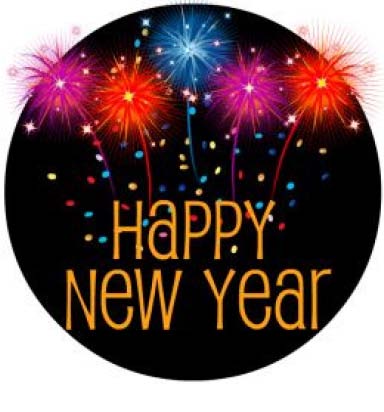
Like many hams, I got interested in amateur radio in my teens. Even so, I didn’t get my Novice ticket until my early 20s, which was about the same time I got married and started a family. Anyway, as you might guess, the hobby of radios, amplifiers, and antennas was replaced by the reality of babysitters, diapers, and mortgages. Fastforward a few decades, and while I still have to deal with mortgages, at least the babysitters and diapers are no longer on the agenda. So, I finally got thinking about amateur radio again … and that loathed CW exam. You can imagine my surprise when a buddy told me there was no more CW requirement for any of the amateur tickets. Now that was a gamechanger.
I studied up for the Tech ticket, and passed handily. Now I was ready to get on the air. But over time I started to realize that Tech privileges are pretty limited, especially if you want to work DX or even contact other parts of the U.S. — at least on phone. Then it hit me: In addition to voice privileges on part of 10 meters and the VHF/UHF bands, the Tech license offers CW privileges on 80, 40, 15, and 10 meters. If I could figure out a way to use some of the current CW software technology on 40 meters, I could do some DX on a basic and relatively inexpensive station setup.
* 586 Willoughby Ln Bowling Green, KY 421019055 Email: <mrevels@earthlink.net>
Getting Started with CW Software Tools
To get started, I hooked up my Alinco DXSR8, a RIGblaster Advantage external audio card, and a Buddipole portable antenna. I had an old Windows laptop on hand, and conscripted it as my CW test machine. These were connected as illustrated in Figure 1:
Compared to 20 years ago, today there are many more possibilities for automating CW. I started downloading various free (or demo) packages just to see how they worked. I tried several, including:
The bad fist problem is probably the most difficult aspect for the software to manage. Simply put, bad fist means CW characters are not formed properly or have incorrect spacing. Not surprisingly, I found that all the tested software had trouble in this area.
The More, the Merrier
My most profound discovery, which occurred by accident, was that you can run more than one decoder tool at the same time. This means that if you have one tool that does certain functions well, but others poorly, you can add a different tool as needed. For example, there were numerous positive comments on the web about FLDigi. This is mainly because it will work with several digital modes in addition to CW. However, in my experience, I found that FLDigi’s CW decoding capability was not quite as good as MRP40 (despite the eHam rating). But since I can run Fldigi and MRP40 at the same time, I get the best of both worlds. See Figure 2 for a screenshot example. Note how MRP40’s decoded text (on the right) is more complete.
CW Keyers
Aside from CW decoding, some CW software tools also provide transmit (keyer) capabilities. I found that most tools do this in a similar way. I also found that, unlike receiving, there does not seem to be much debate on how well a given keyer software tool sends CW. However, CW keyer tools do vary on how they implement macros.
Macros refer to the use of a single computer keyboard key to send many different key strokes. For example, with Fldigi I can program the F5 key to send the following CQ automatically:
You should note that if you find a decoder/keyer tool you like, but it does not have macro capability, that’s not a problem. You can use basic computer macro programs such as Macro Express (see <http://www.macros.com/>) to automate any keystrokes you like. In fact, Macro Express has far more macro capability than any of the decoder tools I reviewed. It is very powerful, but, unfortunately, it is not free.
CW Protocol
I alluded earlier to the importance of protocol. If you are new to CW, it can be challenging when conducting a QSO to know what to say and when to say it. For example:
My Results
My initial results using Fldigi and MRP40 were very satisfying. I completed my first automated CW QSO with a local ham not more than five miles away at 10 watts. This increased my confidence, which encouraged me to increase my power to 100 watts. Over the next few days, I was able to make several more automated CW QSOs within a 500to 600mile radius, and without knowing a lick of Morse code. Well, that is a bit of an exaggeration; I know CQ when I hear it!
Keep in mind that I was using a Buddipole in a dipole configuration about 8 feet off the ground. Using a dipole that low to the ground undoubtedly resulted in a high takeoff angle, which limited my long range DX opportunities. As a result, I am looking forward to working on a different antenna configuration to see how well I can make more DX contacts using the automated CW tools.
List of Software
As I mentioned earlier, there are numerous CW decode/keyer tools available. I listed all the tools I know about with their websites, eHam ratings, and listed price in Table 1. Not all of these programs are either exclusively or primarily intended as CW decoding/keying software. CW Skimmer, for example1, seems better suited for DX contesting; it really shines in helping spot CW callsigns in pileups.
I also have to share a web tool that was very beneficial for testing my setup. The Reverse Beacon Network (RBN) is comprised of listening stations that use software, like CW Skimmer, to listen for CW CQs on various bands. When they detect a valid license ID, they broadcast it on their website <http://www.reversebeacon. net/index.php>. As a result, you can transmit CQ with your radio and watch RBN (in near real time) on your computer to see where you are being heard. This makes it very easy to determine your signal reach and whether changes in antenna configuration make a difference.
Conclusion
Based on my experience, you can easily make HF CW contacts on 40 meters using simple equipment, free CW software, and absolutely zero knowledge of Morse code. I know that some hams have a negative attitude towards using software for CW2. I find that frequently the most vocal are those that have used CW for many decades and can send and copy 3040 WPM or faster. I get that. However, very few new operators today will ever reach that level of proficiency.
From my perspective, there are three good reasons to consider using software for CW:
So, whether you are a new Tech, or a seasoned ham who just wants to get into CW (again), give CW software a try. If you are a new Tech, hopefully you will have enough fun to stay in the hobby until you can score that General ticket.
Notes:
1 You might want to check out Eric Manning’s excellent review of CW Skimmer in the November 2013 edition of QST.
2 – Editor’s comment: While we have no objection to the use of CW decoding software as part of your ham radio “toolkit,” we firmly believe that learning and knowing Morse code, at least at a basic level, is a very useful skill. One of the great benefits to Morse is that it is the only “digital” code that can be decoded without using a computer, allowing for the use of very simple stations, particularly in “off the grid” situations. CW decoding software can be an excellent tool to help you learn the code, as you will likely begin picking up letters and words without even realizing it. But it is our strong belief that, when possible, it should be used as an adjunct to learning Morse code, not as a substitute. – W2VU
Wordt dit de toekomst?
Nico, PA0MIR
5. Eraf
Ik heb een nieuwe 30m deltaloop bouwkit te koop. Dit zijn alle benodigdheden voor een 30m deltaloop, exclusief de 29.7 meter antennedraad. Voor 25 euro ben je de man of vrouw natuurlijk. Interesse? Spreek me a.s. maandag maar aan.
PA4XA, Sietse
6. Vlooienmarkt NO Veluwe
Zaterdag 28 februari 2015 organiseert de afdeling Noord Oost Veluwe van de landelijke Vereniging voor Experimenteel Radio Onderzoek (VERON) al weer voor de twintigste maal haar Elektronica Vlooienmarkt. Deze wordt gehouden in de meer dan 1000 vierkante meter grote sporthal van MFC Aperloo alweer ruim 230 meter aan kramen opgesteld zal staan.
Op deze Elektronica Vlooienmarkt worden nieuwe of gebruikte spullen aangeboden door standhouders uit Nederland, Duitsland en België Er is een groot aanbod van spullen die op de een of andere manier met elektronica te maken hebben.
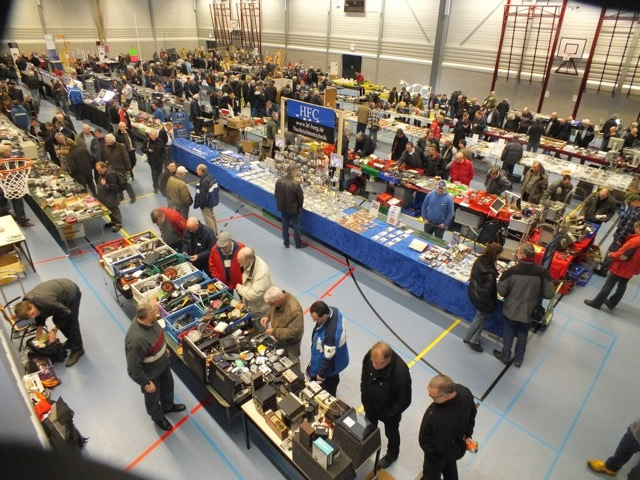
Voor de radio hobbyisten zijn er allerlei spullen te koop variërend van antennes, kabels, meetapparatuur en voedingen tot allerlei soorten transceivers, porto`s. En natuurlijk wordt de zelf bouwende elektronica hobbyist niet vergeten door het grote aanbod van losse onderdelen en (sloop)apparaten. Zo zijn er voor de computer liefhebbers computers, laptops, componenten en accessoires verkrijgbaar maar ook DVD`s en dergelijke voor zeer gunstige prijzen. Ook zullen er allerlei soorten led verlichting , led strips, zaklantaarns, telefoonladers, opbergsystemen, opbergkratten, gereedschap en vele andere zaken te koop aangeboden worden.
Dus mocht u op zoek zijn naar een moeilijk verkrijgbaar onderdeel, verzamelt u oude radio’s, oude leger apparatuur, bent u een computeraar, of wat dan ook op het gebied van elektronica, kom dan zaterdag 22 februari 2014 naar deze gezellige Radiomarkt. De markt wordt gehouden in het Multi Functioneel Centrum “M.F.C Aperloo" Stadsweg 27 't Harde. De markt begint om 09.00 uur en duurt tot 15.00 uur en de entree bedraagt 3 Euro. Er is voldoende gratis parkeerruimte .
Voor het laatste nieuws en informatie : www.pi4nov.nl
7. Slotwoord
Dit was de eerste nieuwsbrief van 2015. Ik heb ook een mooi stuk over 'Arduino', een hippe computer techniek voor experimenteerders, uit de laatste Amstelstraler geprobeerd te importeren maar dit is mislukt. Het artikel is echter dusdanig interessant dat ik het jullie niet wil onthouden. ik voeg daarom ook maar de hele Amstelstraler bij, want er staan nog meer leuke artikelen in. Ik hoop dat ze het me daar niet kwalijk nemen, maar hij staat op hun website dus zal het wel meevallen.
Ik hoop dat ik in 2015 weer leuke en interessante nieuwsbrieven kan maken. Ik roep het nog maar een keer : COPIJ! Ik begrijp dat jullie niet vrolijk worden van mijn voortdurende oproepen, maar ik blijf het gewoon doen. Ik heb in het recente verleden wel vaker uit onverwachte hoek leuke copij ontvangen. In dat kader hoop ik natuurlijk dat onze vaste en zeer gewaardeerde leveranciers, Stef en Klaas, ook in 2015 weer inspiratie weten te vinden.
Tot slot, kijk ik uit naar de nieuwjaarsbijeenkomst, altijd gezellig en traditioneel een goed begin van het nieuwe (radio) jaar.
Salute, tot maandag.
Best 73’s, Sietse (PA4XA)